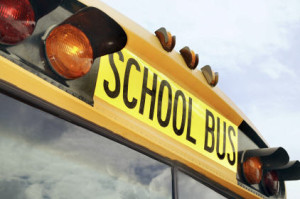Arizona pioneers ‘School Choice 2.0′

By Mary C. Tillotson | Watchdog.org
With cerebral palsy, a vision impairment and dyslexia, 9-year-old Jordan Visser struggled in his public school’s special education program.
His teachers had a defined role in his education and performed that role, but they were not advocates for him like his parents were, his father said in a video recently released by the Foundation for Excellence in Education.
When his parents learned about Arizona‘s Empowerment Scholarship Accounts program, they applied and were awarded one. Through the education savings account, they’ve been able to tailor Jordan’s education to his needs.
They hired “the best teacher that I could possibly have for him” to help him with reading, his mother said, and doubled the amount of physical therapy he had, which helped him with the strength, balance and motor skill difficulties he had because of cerebral palsy.
He’s doing great.
In its many forms, school choice has benefited families across the country. School vouchers, tax-credit scholarships, virtual schools and charter schools have given kids opportunities they wouldn’t otherwise have and debunked the myth that poor kids can’t learn.
School choice proponents often call ESAs “School Choice 2.0” — the latest and greatest school choice program that’s better than anything else.
A NEW FRONTIER: While school vouchers give parents educational flexibility for their kids and save states money, education savings accounts can do both — maybe better.
Vouchers, for example, give parents flexibility with their kids’ education, but ESAs give them more. Vouchers reduce taxpayers’ bill for education, but ESAs can reduce it further. Vouchers have held up well against legal challenges against the programs, but ESAs could hold up even better.
About 700 students in Arizona use ESAs, the only state in the country with the program. In 2013, state lawmakers created or expanded 16 tax-credit scholarship or voucher programs, including ESAs.
If ESAs are so much better, why aren’t they more popular? For one, they’re new — Arizona’s first appeared in 2011, and vouchers date to the mid-1990s. For another, not enough of the right people know enough about them — it takes a long time to educate lawmakers and the public.
School choice laws are routinely challenged in court, and Arizona’s voucher program was no different. In 2009, the state’s supreme court struck down the program, but in its opinion left what Tim Keller called a “road map” leading to ESAs.
Keller is an attorney with Institute for Justice, a libertarian law firm that argues many school choice cases. He’s also one of the original designers of Arizona’s ESA program.
“It was designed to comply with the Arizona Supreme Court‘s ruling in (the voucher case). I feel like they gave us a specific road map that would pass constitutional muster,” he said.
Where vouchers allow parents to choose a private school instead of their local public school, Arizona’s new program gives eligible parents a restricted-use debit card with which they can spend their allotted sum of money on a tailored education for their child.
They can use it for private school tuition, textbooks, private tutoring, educational therapy, community college classes — an a la carte menu of educational expenses. In Jordan’s case, that meant a reading tutor, physical therapy and horseback balance therapy.
Money rolls over year to year, and whatever’s left after high school graduation can go toward higher education.
“You can see the primordial soup of a lifelong learner account in this,” said Matthew Ladner, senior adviser for policy and research at the Foundation for Excellence in Education, who helped design the ESA program years ago when he worked for Arizona’s Goldwater Institute.
The program gives parents greater flexibility in tailoring their children’s education and an incentive to “shop around.”
“Because they have all the things they can do with this money, they’re going to wind up asking the question: ‘Is this the best possible way to educate my child at the lowest possible cost?’ That’s not something you get from a charter school law or a voucher law,” Ladner said.
Milwaukee‘s voucher program, Ladner noted, pays either $6,400 or the cost of tuition, whichever is less, a caveat aimed to prevent private schools from collecting more money than the cost of education. The result? Tuition hikes.
“Now, what we find today is that every single private school participating in the Milwaukee voucher program is getting $6,400,” he said. “With vouchers, there’s no incentive to spend less than $6,400. If someone theoretically came up with a new school model and they could knock the ball out of the park academically for $5,000, it doesn’t matter. They’re going to wind up spending $6,400.”
Milwaukee Public Schools spent $14,038 per pupil in 2010, the Milwaukee Journal-Sentinel reports. Even at the maximum amount, the voucher program educates children at about half the cost.
ESAs can knock costs down even further: when parents have an incentive to look for higher quality with lower cost, schools have an incentive to provide higher quality with lower cost.
The Milwaukee voucher program, Ladner said, is “a fabulous thing. Don’t get me wrong. But…it’s designed to transfer kids into private schools at $6,400.”
A handful of states are considering passing ESA laws this session — Oregon, Oklahoma, and some others — and school choice proponents expect to see the program cropping up around the country, like vouchers did, over the next several years.
“A school voucher program is like a rotary telephone. It’s a fabulous piece of technology, and it’s a gigantic advancement in humankind,” Ladner said.
“An iPhone is a lot better than a rotary telephone. A rotary phone can do one thing and that one thing is to make a telephone call. An iPhone can do lots of things. It’s more flexible, more versatile. I think it’s the next natural step in school choice.”
Contact Mary C. Tillotson at mtillotson@watchdog.org
The post Arizona pioneers ‘School Choice 2.0′ appeared first on Watchdog.org.







